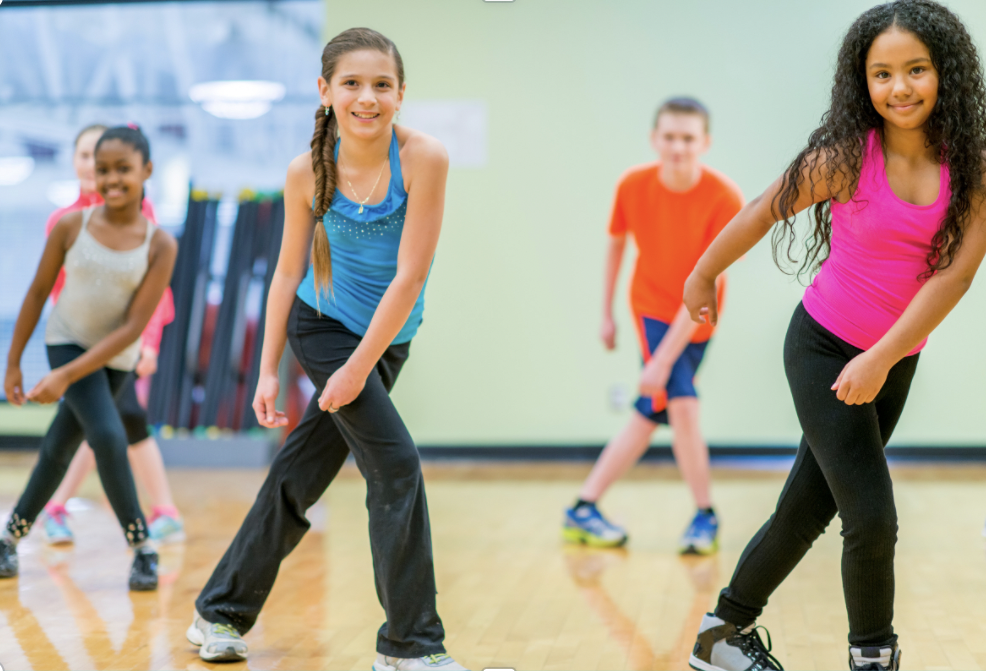
Dance is one of the purest forms of self expression available to humans. It can be joyful, cathartic, beautiful, somber – as complicated, fluid and explosive as our own ever-changing quilt of emotions. The Covid pandemic has forced us to change many things and, unfortunately, keeping the kids and ourselves as active as we need to be to stay healthy and happy is proving to be extremely challenging. But just in case you didn’t know, here are a few of the reasons you should get your kids, and yourself, dancing at least a few days a week.
There is clinically significant evidence that children who dance regularly are less likely to develop health problems.
Children who spend more than two hours a day on screen related pastimes run an increased risk of developing health issues, the biggest threat being obesity. There are the obvious benefits of practicing dance: a fun source of exercise, healthy blood pressure and cholesterol levels, helping to maintain a balanced lifestyle, and reduced obesity. And there is clinically significant evidence that children who participate actively in the performing arts spend less time sitting in front of a computer screen playing games and therefore are at less of a risk of developing health problems.
Physical Health Benefits of Dance for Young Children
- Improved condition of heart and lungs
- Increased muscular strength, endurance and aerobic fitness
- Better coordination
- Better agility
- Better flexibility
- Healthy blood pressure
- Improved overall balance
- Improved spatial awareness
Non-physical Health Benefits of Dance for Young Children
- Better social skills
- Improved general and psychological well-being
- Greater self-confidence
- Greater self-esteem
- Greater self-motivation
- Improved mental dexterity
Can dance stimulate my child’s creativity and improve their well-being?
While dance is a good source of fun exercise for young children, it is also a creative outlet. Fun exercise is important but the opportunity to unleash creativity is as crucial to the development of healthy children as exercising and maintaining a balanced diet. Dancing can make a child feel physically refreshed and improve their mood, helping them to overcome serious issues including anxiety and depression. Group dancing is a tool to release daily stress, a distraction from everyday worries and an outlet for imagination and emotion.
Would a dance class have physical benefits for my child?
There are many physical benefits to taking a dance class as a child. Through dance, children develop a greater range of movement while developing the ability to work within different spaces. They learn to interpret the effect their movement has on the world around them. Dancing also improves a child’s coordination, especially at a time when they are rapidly developing in an ever-changing and evolving environment. Good coordination is vital in developing skills learned in other parts of life, such as riding a bike and learning how to multitask successfully. Dance and movement patterns also develop kinesthetic memory. It also develops strength and endurance from an early age. This creates a solid platform for the child’s physical development and level of fitness.
Dance builds healthy, strong muscles.
The average human has about 642 muscles in their body. Young children are naturally active, but dancing makes use of more of these muscles and helps the child develop the use of her or his body. Through the process of learning movement, children become more aware of their bodies and their capabilities. They develop an understanding of what each muscle and limb can do, and build the courage to experiment with movement and to push themselves to see what they can achieve with their own bodies. This personal sense of adventure is an important life trait for children to develop and a skill they can apply in all aspects of life. It contributes to the development of a child’s confidence and bravery, and encourages them to search for new challenges.
Can dance help with my child’s social development?
Learning to socialize with others from a young age is a vital part of a child’s cognitive development. The ability to express emotion comfortably in front of others shows mental maturity and learning to do so through movement and dance provides a safe gateway for young children to explore. Performing arts activities bring together children from a variety of backgrounds and personalities, creating an environment outside of the habitat a child is accustomed to. Children are forced to learn to adapt and communicate in new ways. By navigating this new environment through creativity, children learn to build trust and effective relationships.
Being part of a group activity, such as learning a dance routine, promotes the importance of teamwork and develops the ability to work successfully in a group environment. The process also helps a child learn patience, listening and leadership skills as they start to help each other with learning and practicing the steps. They also learn to accept vulnerability; that it is okay not to be able to do everything first time and that you should feel confident enough to ask for help, either from the teacher or from another student.

Building self-confidence
In a 2013 study of a Toronto dance class, it was found that, on average, 82% of parents with children aged 5 to 7 years felt that their child’s confidence levels improved as a result of attending dance classes. The feedback from this study supports the belief that dance is an important tool to use to build a child’s confidence.
Nonverbal communication represents two thirds of all communication. It’s important for young children to understand that it is possible to portray a message both verbally and with the correct body signals and also to be able to interpret these signals from other people. The study of dance and movement can help a child develop an understanding of their own body language as well as that of others. While it is relatively simple to express without words straightforward emotions such as ‘happy’ and ‘sad’, the study of dance can teach a child how to express physically more complex emotions and how to read and react when someone else is physically emoting.
Perseverance and self-motivation
When young children study dance they learn perseverance and self-motivation. Dancing encourages children to experiment and find different paths to solving problems. It is vital in a child’s personal development that they learn the importance of trial-and-error and that, if at first you don’t succeed, try and try again. The sense of success and accomplishment they will experience when they have mastered a complicated movement will encourage them to transfer this ambition into other aspects of life.
Mental dexterity
The exercise of repetition and rehearsal when dancing improves mental dexterity. Learning body movement and gestures helps children absorb ideas better and improves their ability to absorb and hold information. There is a perceived view that children should only attend dance classes if they want to perform on a stage. The fact of the matter is that this couldn’t be further from the truth. Yes, dance classes are an ideal stepping stone for a child who is showing early signs of a natural flair for performance. However, there are a magnitude of benefits of learning to dance for a child who is shy, has low self-esteem or has shown no interest in performing. This is why we are all inclusive, not exclusive, at Legworx. We understand the importance of performing arts to all children and it is our aim to promote this. We provide a safe environment within which young children can blossom and grow, practicing important life skills and becoming confident risk takers.
LEGWORX – the best place for children to explore movement
Dance allows children to explore and express themselves freely. It helps a child develop a better understanding of themselves, both physically and mentally, as well as understanding others and the world around them. It encourages children to use their own imagination and ideas to organically grow and create. When a child practices and learns a dance routine they become more confident in their own skin and sense of self and are able to express their personality and emotions without fear of the reaction they might receive.
The impact of creative learning on children is enormous. It promotes the importance of teamwork and social inclusion in a subtle but direct manner. A child who has the opportunity to study dance becomes more interesting, expressive and motivated. And in these trying times, not only will dance give your children an outlet for fighting the stress, anxiety and uncertainty they face, but it’s also a whole lot of fun.
